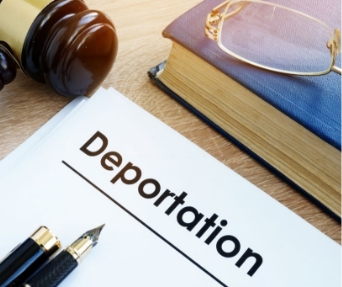You MUST leave Canada if you receive a Removal order; you cannot legally remain in Canada. Your removal order may be effective immediately, or after a negative decision if you had made an appeal depending on your situation.
There are three types of Removal Orders issued by Immigration, Refugees and Citizenship Canada (IRCC) or the Canada Border Services Agency (CBSA). These are known as Departure Orders, Exclusion orders and Deportation Orders. Which type of order you received is indicated on the form number on the Removal Order.
- You must leave Canada within 30 days after the Departure order takes effect.
- It’s important that you confirm your departure with the CBSA at your port of exit. If you follow these procedures when leaving Canada, you may return to Canada in the future given that you meet the entry requirements at that time.
- If you do not confirm your departure wit the CBSA when you leave Canada after 30 days, your Departure order will then automatically become a Deportation Order. You must obtain an Authorization to Return to Canada (ARC) in order to return to Canada in the future.
- You cannot return to Canada for one year with an Exclusion Order.
-
- You must apply for an ARC if you do wish to return before the 12 months have passed.
- You cannot return to Canada for five years if an Exclusion Order has been issued for misrepresentation.
- You must repay that cost if the CBSA paid for your removal from Canada.
- Unless you apply for an ARC, you are permanently barred from returning to Canada with a Deportation Order
- You must also repay the cost of your removal before you are eligible to return if the CBSA paid for that cost from Canada.
You can visit the IRCC website for more information on returning to Canada.
Appealing a Removal Order
The Immigration and Refugee Board of Canada (IRB) is responsible for any appeals to Removal Orders. You can visit IRB website for further information.
You may also apply to the Federal Court of Canada for a judicial review of any IRB decision. You can visit the Federal Court of Canada for more information regarding this.
Refugee Applications and Removal Orders
You will receive a conditional Removal Order if you are a refugee claimant. This Removal Order will not be enforced if your refugee claim is accepted. If you become a permanent resident of Canada, the Removal Order will then become void. However, if your refugee claim is rejected, the Removal Order will then come into effect. You must leave Canada immediately once all avenues of recourse are exhausted.
Failure to Leave
You must leave Canada immediately once a Removal order takes effect.
The CBSA will issue a Canada-wide warrant for your arrest if you fail to appear for a removal interview or a scheduled removal date. The CBSA may detain you in a holding facility before removal once arrested.
Reasons for delays
There are many reasons that can prevent a Removal Order from being enforced in an expeditious manner. This includes:
- Appeals and legal proceeding – An individual who is involved in other legal proceedings or who appeals the removal order.
- Claims for protection – If an individual is eligible to make an application for a pre-removal risk assessment (PRRA), removal cannot proceed until a final decision has been made on the application.
- Travel documents – When the CBSA has trouble obtaining passports, it is unable to allow the individual to enter another country.
- Identity – When an individual’s identity or citizenship cannot be confirmed.
- Failure to appear – The CBSA will issue an immigration arrest warrant if the individual fails to appear for removal at an appropriate time or location.
- Administrative deferrals of removals (ADR) – The ADR is a temporary measure when immediate action is necessary to defer removals for a short period of time in situations of humanitarian crisis. The ADR is not intended to address persistent and systematic human rights problems which constitute individualized risk. The ADR is lifted when the situation in a country stabilizes and the CBSA resumes removals for individuals who are inadmissible to Canada and have a removal order in effect.An ADR is currently in place for certain regions in Somalia (Middle Shabelle, Afgoye and Mogadishu), the Gaza Strip, Syria, Mali, the Central African Republic, South Sudan, Libya, Yemen, Burundi, Venezuela, Haiti and the Hubei province of China. It’s important to note that an individual who is inadmissible to Canada on grounds of criminality, international or human rights violations, organized crime, or security can still be removed in spite of the ADR.
- Temporary suspension of removals (TSR) – The TSR program is designed to prevent removals to a country or place when general conditions pose a risk to the entire civilian population. For example, armed conflicts within a country or a place or an environmental disaster resulting in a substantial temporary disruption of living conditions are considered as those general conditions. Currently, Canada has a TSR in place for Afghanistan, the Democratic Republic of Congo, and Iraq.Once again, any individuals who are inadmissible to Canada on grounds of criminality, international or human rights violations, organized crime, or security can still be removed despite the TSR. The major difference between the TSR and the ADR are that an ADR is taking effect within a short period of time to immediately respond to a change in country conditions.
You may be eligible to apply for a work permit or a study permit if you cannot be removed from Canada because an ADR or a TSR has been imposed.






